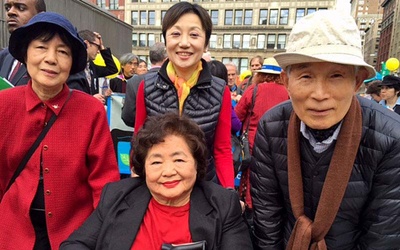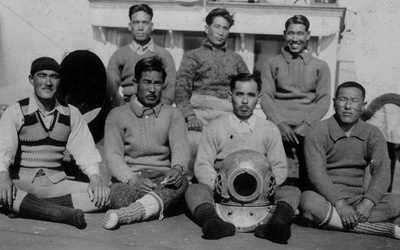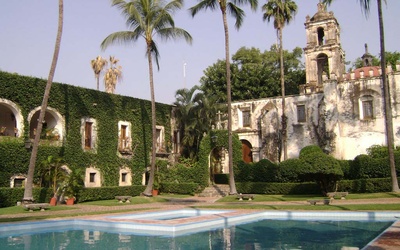
Sergio Hernández Galindo
@sergiohernandezSergio Hernández Galindo is a graduate of Colegio de México, where he majored in Japanese studies. He has published numerous articles and books about Japanese emigration to Mexico and elsewhere in Latin America.
His most recent book, Los que vinieron de Nagano. Una migración japonesa a México (Those who came from Nagano: A Japanese migration to Mexico, 2015) tells the stories of emigrants from that prefecture before and after the war. In his well-known book, La guerra contra los japoneses en México. Kiso Tsuru y Masao Imuro, migrantes vigilados (The war against Japanese people in Mexico: Kiso Tsuro and Masao Imuro, migrants under surveillance), he explained the consequences of conflict between the United States and Japan for the Japanese community decades before the attack on Pearl Harbor in 1941.
He has taught classes and led conferences on this topic at universities in Italy, Chile, Peru, and Argentina as well as Japan, where he was part of the group of foreign specialists in the Kanagawa Prefecture and a fellow of the Japan Foundation, affiliated with Yokohama National University. He is currently a professor and researcher with the Historical Studies Unit of Mexico’s National Institute of Anthropology and History.
Updated April 2016
Stories from This Author
An exemplary hibakusha and nikkei at 80 years of age
Aug. 19, 2019 • Sergio Hernández Galindo
Yasuaki Yamashita would probably not be among us now if his mother had not hugged him and protected him with her body at the moment the atomic bomb exploded over the city of Nagasaki on August 9, 1945. This Japanese city, in the first days of August of that year, had already been the target of North American bombings that partially destroyed the port shipyards, the city hospital and the Mitsubishi factory. But Fat Man , the name by which …
Totaro and Kazuma Nishikawa: The Legacy of Japanese Fishermen in Baja California - Part 2
June 18, 2019 • Sergio Hernández Galindo , Kiyoko Nishikawa Aceves
Read Part 1 >> On December 7, 1941, the Japanese navy attacked Pearl Harbor. Although the tension between Japan and the United States catalyzed the imminence of war, the attack on the U.S. naval base in Hawaii surprised everyone. The news spread like wildfire in Ensenada. The fishermen were on the dock that afternoon when their colleagues rushed to tell them, “War broke out, war broke out! Japan bombed Pearl Harbor!” Their initial reaction was one of great pride at …
Totaro and Kazuma Nishikawa: The Legacy of Japanese Fishermen in Baja California - Part 1
June 17, 2019 • Sergio Hernández Galindo , Kiyoko Nishikawa Aceves
Two brothers named Totaro and Kazuma Nishikawa formed part of an important wave of Japanese fishermen who settled in Ensenada in the early 1930s. Twenty years before, however, the first Japanese fishermen had already arrived in Baja California, when the Porfirio Díaz administration granted Aurelio Sandoval a fishing permit that Masaharu Kondo, an expert in fishing technology, would subsequently approve upon realizing the fruitfulness of the waters of Baja California. The fishing industry in the peninsula would enjoy a boom …
Julio Mizzumi Guerrero Kojima: A Jarocho Nikkei Searches for His Many Roots - Part 2
April 3, 2019 • Sergio Hernández Galindo
Read Part 1 >> Julio Mizzumi Guerrero Kojima is an acclaimed musician of the son jarocho and fandango movement. To achieve this recognition, this Nikkei musician, who plays the jarana (similar to a guitar), has traveled a long road to understanding that the music and traditions of his people are a part of his identity, an inner essence that gradually flourished and found expression. This process occurred while he was also searching for his Japanese roots and the legacy of …
Julio Mizzumi Guerrero Kojima: A Jarocho Nikkei Searching for His Many Roots - Part 1
April 2, 2019 • Sergio Hernández Galindo
Julio Mizzumi Guerrero Kojima is a folk musician and preschool teacher of Nikkei origin, who was born in a small village in Veracruz on the shores of the Papaloapan River, also known as “river of the butterflies,” in 1970. The village of Otatitlán (which means “place of the bamboo” in the Náhuatl language) where Julio grew up is part of an incredibly rich microcosm in the region called Sotavento (“place of high winds”). The many different cultures flourishing here have …
The War between the United States and Japan and the Persecution of Japanese Immigrants in America
Dec. 10, 2018 • Sergio Hernández Galindo
The attack on Pearl Harbor on December 7, 1941 didn't just spark a war between the United States and Japan. Beginning on that day, communities of Japanese immigrants who had settled in several countries in America also became part of the conflict and hostilities. Several governments in America considered Japanese immigrants to be an invading army of the Japanese empire, and as a result they were forcibly relocated and persecuted despite having settled in those countries decades before. The children …
Kendo Koi and Junsaku Mizusawa: Japanese doctors in Veracruz and Oaxaca
Nov. 2, 2018 • Sergio Hernández Galindo
In 1897, Japanese workers began to arrive in Mexico as part of the friendship agreement that was signed in 1888 between both governments. At first, farmers arrived in Chiapas, workers in the mines of Coahuila and Chihuahua, day laborers in Veracruz, and fishermen in the port of Ensenada in Baja California where they dedicated themselves to capturing abalone and other marine species. Later in 1917, thanks to an agreement signed between Japan and Mexico, doctors, dentists, veterinarians and pharmacists were …
Japanese Peanuts, a Legacy of the Nakatani Family
Aug. 31, 2018 • Sergio Hernández Galindo , Emma Nakatani Sánchez
One of the most popular snacks in Mexico is “Japanese peanuts”. This product--which consists of peanuts with a coating made of toasted wheat flour and soy sauce--isn’t originally from Japan. It was actually invented by Yoshigei Nakatani, a Japanese immigrant who arrived in Mexico in 1932. After coming to Mexico, Nakatani was looking for work and a way to prosper, just like the hundreds of thousands of other immigrants from that country who crossed the Pacific. When he left Japan, …
Kenichi Muray: The historian of the Japanese pioneers of Mexico
July 24, 2018 • Sergio Hernández Galindo
Kenichi Muray was one of the hundreds of thousands of poor emigrants who sought a better future in America. Muray's story, like that of all immigrants, is very interesting in itself. Kenichi came from Shiga prefecture and arrived in Mexico in 1923 at the age of 22. She spent the first decade of her stay in the state of Chiapas and after a brief trip to Japan in 1928, when she married Shige Kobory, she returned to Mexico to settle …
Rosita Urano: A Young Girl Who Lived at the Temixco Hacienda During the War
April 20, 2018 • Sergio Hernández Galindo
The former Temixco Hacienda is home to one of Mexico’s best-known and popular water parks. The vestiges of the hacienda that still remain—including the parish church and extensive gardens—lend a particular beauty to the place. Temixco (a Náhuatl word that roughly translates to “where the rock of feline is”) is near the city of Cuernavaca and has an average temperature of 20º C (68º F). But hidden deep in this heavenly place where the flowers always bloom is a little-known …















